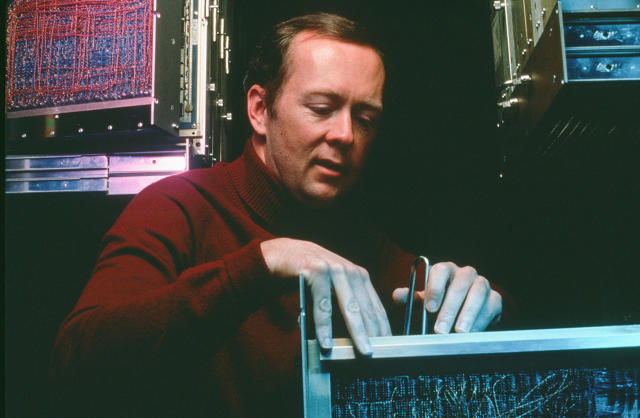So famous that it has been sampled by Dre and parodied on The Simpsons, the THX Deep Note is one of the most recognizable pieces of computer-generated music in the world. Although it contains only one note spread across a variety of pitches and modulations, this 30-channel glissando of discordant sounds builds upon itself to go from loud, to louder, to extremely loud and incredibly close. Now, the iconic audio logo is getting its first redesign ever by the same man who gave the world the Deep Note in the first place. And it's even more dramatic than before. 
A "Biblical" Story
First created in 1983, the Deep Note was originally designed as an audio logo for the then-nascent THX Sound System, a high-fidelity audio standard which LucasFilm introduced with Return of the Jedi. It was originally created by Dr. James "Andy" Moorer, an employee for Lucasfilm's Computer Division. Moorer's boss tasked him to create a singular sound that would let people know they were about to hear the ultimate in audio fidelity.
As Moorer tells it, inspiration for the original Deep Note came to him in a flash. He imagined a sound that told an almost Biblical story about the creation of order from chaos, all in a single note. "That story of triumph over chaos is a fundamental human story, and I wanted to tap into it," he tells me by phone. After all, what better way to signal the ultimate in audio quality than by trying to capture the voice of God?
Using digital audio equipment thousands of times less powerful than your average laptop, Moorer created the Deep Note using an algorithm that generated a 30-second sound from a random hexadecimal number, called a seed. In theory, then, you could recreate any sound generated by Moorer's program as long as you had the original seed. The only problem? Moorer, the accidental author of a sound that was heard at the height of its popularity by movie theater audiences around the world every 20 seconds, not only lost the seed, he never even bothered to write it down in the first place.
"It always bothered me," Moorer says. "I just wasn't happy where we'd left it." Although the Deep Note was recorded for posterity, it was only recorded for four tracks, corresponding to front, back, left, and right channels in a theater. That was fine for 1983, but as surround sound technology expanded to 5.1, 7.1, and even 16.2 channels (the number before the decimal points stands for speakers, the numbers after stand for subwoofers), the Deep Note couldn't keep up. It just wasn't calibrated for more than four speakers, making it sound off on newer systems. Since it couldn't be updated, the Deep Note needed to be recreated from scratch.

A More Distinctive Sound
To create the new Deep Note, Moorer says he used yellowed, dot matrix print-outs of the code he originally wrote at LucasFilm way back in 1983, and got it up and running on modern day computers ("Not a trivial task at all," he says). Once he'd done that, he updated the program to encompass more channels, and add even more distinct voices to the note, to give it even more of a sense of power than it had before. Whereas the original Deep Note only has 30 voices, the new Deep Note has anywhere from 40 to 80, depending on what version you hear (5.1, 7.1, or Dolby Atmos). There are even as many as four new subsonic voices in the Deep Note that reverberate right through your coccyx, there just to keep the subwoofers happy.
The 1983 Deep Note was chosen over the other randomized sounds that Moorer's program spat out because it had a singular feature he really liked. "In that original glissando, there was just this one bass note that stuck out, because it goes right down into the basement," Moorer says. He tells me that the new THX Deep Note was chosen because it had that same quality: a bass note that went into the basement. It's not identical, but it's close. "I'm an engineer," Moorer tells me. "I know from experience when to accept good enough."
A Design For The Ages
Although your average Joe will have a hard time telling the difference, the new THX Deep Note, which is now playing at THX-certified theaters globally, is richer, deeper, and crisper than the old note, especially on modern systems. Moorer has also ensured that it's future-proof. If technology changes again, or if THX needs a version that takes more speakers or channels into account, Moorer can easily update the THX Deep Note without recreating it from scratch. This time, you see, Moorer wrote down the seed—but since he has a history of losing these things, we'll put it out there, just in case: 53ECC300. You're welcome, posterity.
You can listen to the new THX Deep Note here, although be warned: the streaming version is only available in stereo. To get the full effect, you'll need to check it out in a theater.